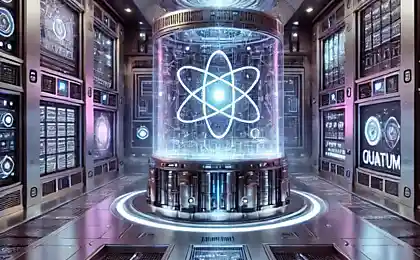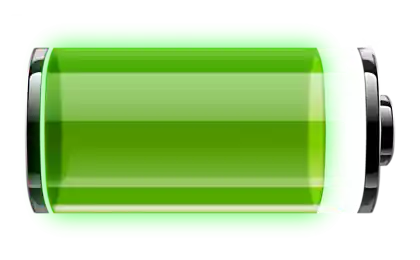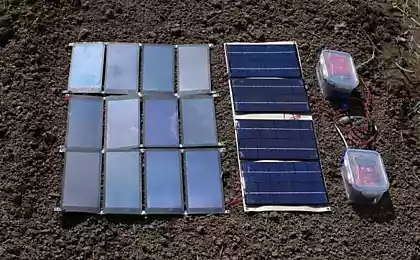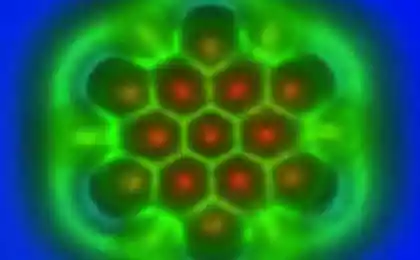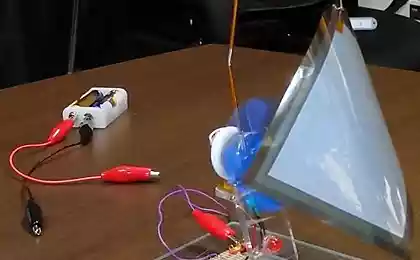377
Quantum battery ready for mass production
The developers of the company Micronics Japan Co. Ltd. they have developed called the battery "quantum", emphasizing its physical and not chemical nature.
A single cell has already been shown by developers is a film of metal-oxide-semiconductor structures are n-type, which uses particles of titanium dioxide, tin dioxide and zinc oxide, covered with an insulating film. The role of the latter there may be both organic and inorganic insulators.
Instead of using storage ion energy (as in the battery of your phone), layered "quantum battery" operates electrons, but not so, as the capacitors. It is argued that the system is based on the storage of electrons "forbidden zone" of the semiconductor.
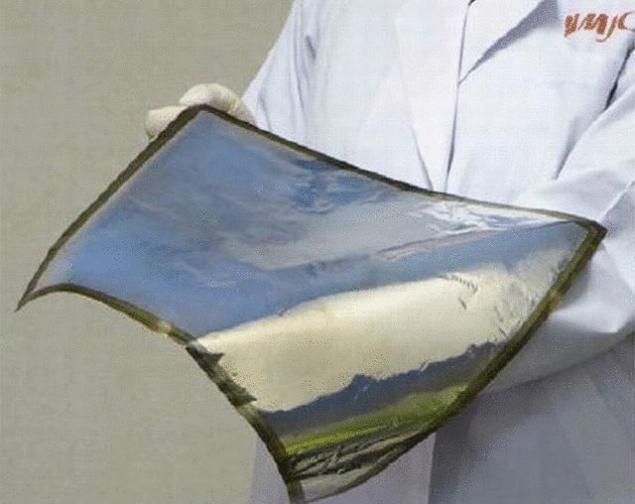
In the production of structures "metal — oxide — semiconductor" charge storage layer is irradiated with ultraviolet light unnamed parameters.
After production, when charging, which can be done from any source, including batteries, electrons occupy free energy levels in the working material and stored there until until the battery will need to discharge.
Thus, before us is a rechargeable battery with a very high density energy storage. According to the company Micronics Japan Co. Ltd., serial samples (promised in the near future) will have a capacity of up to 500 W h/l and can provide up to 8,000 watts of peak power per liter of volume.
This is a breakthrough indicators: these drives even with a small capacity can give more peak power, combining the best features of batteries and supercapacitors.
That is, in theory regenerative braking with them will be able to use a lot more efficiently than in today's electric cars and hybrids. Thus, in contrast to supercapacitors, the voltage is removed from these drives, not decreasing as they discharge, to the end remaining stable.
In addition, stated that the "quantum battery" can work ranging from -25 to 85 °C and its life cycle is up to 100 thousand cycles of charge-discharge before the fall of the capacity is below 90% of the original.
Unlike previous versions of "quantum battery", the new product does not use complicated and expensive materials like graphene, and therefore "fully ready for mass production". published
P. S. And remember, only by changing their consumption — together we change the world! ©
Source: vk.com/technocracy
A single cell has already been shown by developers is a film of metal-oxide-semiconductor structures are n-type, which uses particles of titanium dioxide, tin dioxide and zinc oxide, covered with an insulating film. The role of the latter there may be both organic and inorganic insulators.
Instead of using storage ion energy (as in the battery of your phone), layered "quantum battery" operates electrons, but not so, as the capacitors. It is argued that the system is based on the storage of electrons "forbidden zone" of the semiconductor.

In the production of structures "metal — oxide — semiconductor" charge storage layer is irradiated with ultraviolet light unnamed parameters.
After production, when charging, which can be done from any source, including batteries, electrons occupy free energy levels in the working material and stored there until until the battery will need to discharge.
Thus, before us is a rechargeable battery with a very high density energy storage. According to the company Micronics Japan Co. Ltd., serial samples (promised in the near future) will have a capacity of up to 500 W h/l and can provide up to 8,000 watts of peak power per liter of volume.
This is a breakthrough indicators: these drives even with a small capacity can give more peak power, combining the best features of batteries and supercapacitors.
That is, in theory regenerative braking with them will be able to use a lot more efficiently than in today's electric cars and hybrids. Thus, in contrast to supercapacitors, the voltage is removed from these drives, not decreasing as they discharge, to the end remaining stable.
In addition, stated that the "quantum battery" can work ranging from -25 to 85 °C and its life cycle is up to 100 thousand cycles of charge-discharge before the fall of the capacity is below 90% of the original.
Unlike previous versions of "quantum battery", the new product does not use complicated and expensive materials like graphene, and therefore "fully ready for mass production". published
P. S. And remember, only by changing their consumption — together we change the world! ©
Source: vk.com/technocracy






